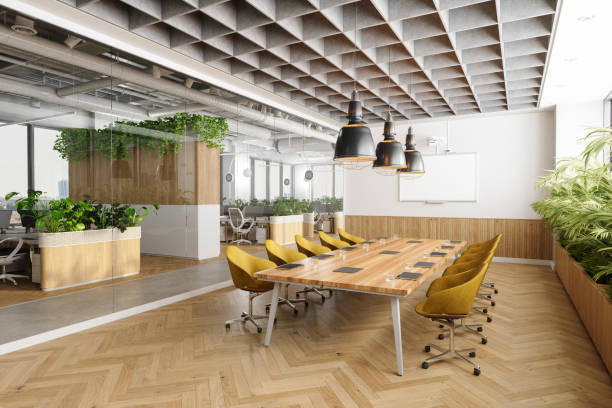Integrating greenery and natural materials to enhance wellbeing
Bringing plants and natural materials into a work area can shift the feel and function of a workspace, supporting wellbeing and comfort for people who telecommute or split time through hybridwork. Thoughtful choices around layout, finishes, and living elements can influence mood, air quality, noise control, and the way a space supports daily tasks.

How does biophilia support wellbeing?
Biophilia—the innate human attraction to nature—helps create a calmer, more restorative workspace. Introducing potted plants, a living wall, or natural textures like wood and stone can reduce perceived stress and make the room feel less clinical. Visual access to greenery and organic shapes can lower cognitive load during transitions between tasks, supporting focus for people who alternate between concentrated work and video calls. Short, routine care of plants also provides brief breaks that refresh attention without disrupting workflow, which benefits overall mental resilience.
This article is for informational purposes only and should not be considered medical advice. Please consult a qualified healthcare professional for personalized guidance and treatment.
How can ergonomics and furniture work with natural elements?
Ergonomics remains central when adding natural materials: choose seating and desks that support posture while incorporating wood, woven fibers, or cork as finishes. A sit-stand desk with a timber top preserves ergonomic adjustability while introducing warmer tactile surfaces. Chairs with breathable, fabric or natural leather coverings can balance comfort and durability—ensure lumbar support and correct seat height to prevent strain during extended telecommuting sessions. Pairing well-designed furniture with natural finishes maintains functional support without sacrificing the calming qualities of biophilic design.
Can lighting and ventilation complement greenery?
Natural and layered lighting is essential for both plant health and human comfort. Position workstations to maximize daylight, and supplement with adjustable task lighting to reduce eye strain during focused work. Plants placed near windows can benefit from indirect light; avoid over-densifying sunny sills if ventilation is limited, as heat buildup can stress foliage and occupants alike. Adequate ventilation, whether natural cross-breezes or mechanical systems, supports indoor air quality and helps manage humidity—both important for plant health and occupant comfort.
How do acoustics and materials affect comfort?
Soft natural materials such as wool rugs, cork panels, or wooden bookshelves absorb and diffuse sound, improving acoustics in open or multipurpose rooms. Living plants with broad leaves also scatter sound, reducing echo and improving perceived privacy during calls. When designing for hybridwork, combine absorptive textiles with reflective surfaces strategically to avoid creating an overly muffled environment. Consider acoustic placement relative to work zones and video backgrounds to maintain clear audio during calls while keeping a natural aesthetic.
Will greenery influence productivity and hybridwork habits?
Research and workplace observations indicate that greener, well-designed environments can support concentration and creativity, which affects productivity positively. For hybridwork and frequent telecommuting, an environment that signals separation between work and home life—via a distinct green corner or natural material accent—can help with psychological transitions at the start and end of work periods. However, productivity gains depend on layout, ergonomics, lighting, and organizational systems working together; greenery is a supportive element rather than a sole solution.
What about organization, storage, and connectivity?
Good organization and accessible storage ensure that natural elements don’t become clutter sources. Integrated shelving in natural wood, closed storage cabinets, and cable management maintain a tidy visual field that complements biophilic accents. Keep frequently used tools within reach to support ergonomic posture, and position power and connectivity hubs to avoid trailing cables among plants. Reliable connectivity and a clear, organized desktop help hybridwork and telecommuting flow smoothly while reinforcing the restorative effects of a well-composed, naturalized workspace.
Conclusion Integrating greenery and natural materials into a work area is most effective when paired with ergonomic furniture, thoughtful lighting and ventilation, improved acoustics, and practical organization. Each element contributes to a workspace that supports both comfort and performance for people working from home or in hybrid arrangements. Thoughtful selection and placement of plants and finishes can enhance wellbeing while fitting into a functional, connected workflow.





